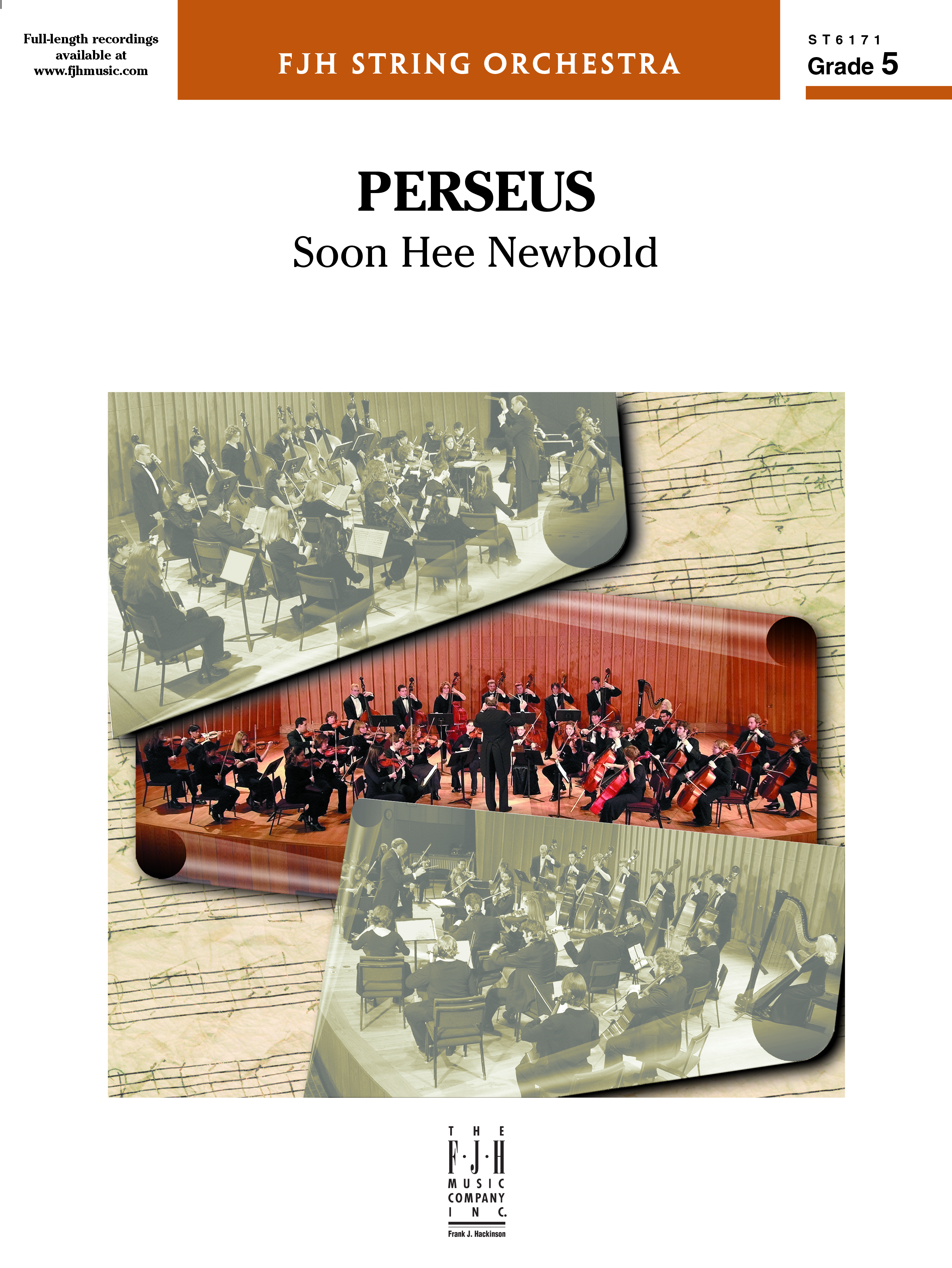
Perseus by Soon Hee Newbold
Ensemble type: String Orchestra
Difficulty: Grade 5
Recommended by: Giovanna Cruz, Director, Customer Services
“Perseus is a fast-paced, flashy, and fun piece that your advanced high school students will enjoy. Its rhythmic pulse and forward drive are compelling.”
Why did you choose this piece to perform with your group?
It was the end-of-year concert in 2014 and I had my students choose one of the pieces for the final concert from a list of grade 4 pieces. We were looking for something flashy and high-energy. They chose this one and had a great deal of ownership in its preparation.
What skills does it address or lessons does it teach?
Mixed meter, tempo changes, style changes, shifting.
What are some teaching strategies you would recommend to teachers who are rehearsing this piece?
Read the story of Perseus and how he slew Medussa to free his mother from Polydectes, and how he married Andromeda. This will provide context and imagery as you work on the different sections of the piece. Then teach the core repeated rhythms that appear throughout the piece, as well as any bowing patterns. Work on the underlying rhythmic equivalences when shifting meters to help students understand when the eighth note is the constant. Work on shifting into 2nd and 5th position for violins.
What memorable experiences did you have while rehearsing or performing this piece?
Seeing my students get so excited to practice this piece and then perform it. Because they chose it, they had a great desire to play it well. It was also one of the last pieces I conducted with my students before coming to work for MakeMusic.
How did SmartMusic enhance the rehearsal process?
The recording gave them a good model to follow. We used the assignment feature to help them practice and prepare the most challenging sections. The visual and aural feedback helped them improve and make corrections where necessary. Learning the notes was easier with the help of SmartMusic. In class, we focused on style, dynamics, and ensemble issues.
What sections or measures needed the most attention?
For all: counting in the vivace section starting at 101. Rhythmic alignment.
Violin 1: top part in the divisi from 91-101. Intonation m. 131-136 because of the high position. Tuning of octaves m. 168-171 and 176-182.
Violin 2: tuning of divisi sections. Rhythmic alignment. String crossings 168-172, 176-end.
Violas: 35-43, vivace section for counting, especially 111 to 121.
Cellos/basses: 35-57, 101-122.
Add Perseus to a playlist.
